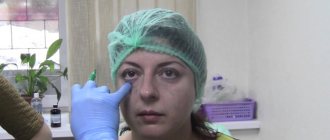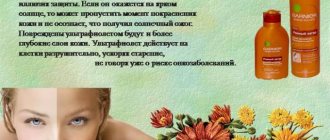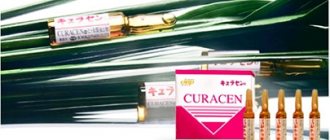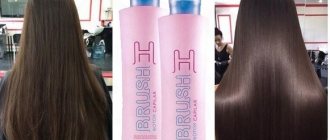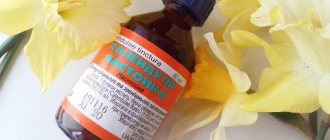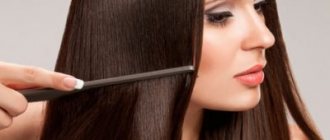Botox in cosmetology
Botulinum toxin is based on a protein complex, a waste product of the bacteria Clostridium botulinum. In cosmetology, Botox injections can help smooth out wrinkles. The active ingredients of the drug relax active muscles that form telltale folds, resulting in a smoother surface of the skin. With the systematic use of Botox injections, the muscles are in a relaxed state, new wrinkles do not form.
Despite its ability to remove signs of aging on facial skin, botulinum toxin also has disadvantages. With the help of the drug it is impossible to eliminate all existing wrinkles. The active action of the substance can only combat facial expressions, which are the result of an excess of muscle activity. For example, the area around the mouth, chin and cheeks are not suitable for botulinum toxin injection.
Antidepressants
Antidepressants (ADs) are used not only in the treatment of depression and anxiety, but also for any chronic pain syndrome, sleep disorders, chronic dizziness and to eliminate other psychosomatics.
Epidemiological studies indicate common pathways for the development of depression and chronic tension-type headache (CTTH). Therefore, if migraine, tension headaches, excessive headaches resulting from uncontrolled use of pharmaceuticals, and other types of headaches are detected, the doctor may prescribe the patient to take antidepressants. Thus, fluoxetine (Prozac) has proven itself positive in the treatment of chronic migraine and chronic headache. According to Ph.D. A.M. Veina and prof., d.m.s. T.G. Voznesenskaya, the effectiveness of therapy with this drug was noted in 65% of patients. Prozac has been shown to reduce the frequency and duration of seizures.
The group of tricyclic antidepressants (imipramine, amitriptyline, clomipramine) in the treatment of headaches leads to an analgesic (painkiller) effect by the end of the first week of taking the drugs, and in the 2-3rd week, as a result of the psychotropic effect, mood improves, the state of anticipation of spasms disappears and performance increases .
After several months of such therapy, antidepressants are gradually discontinued. There is no pharmacological dependence on antidepressants, only an individual, psychological one.
Modern ADs have virtually no side effects, but their use is undesirable in childhood and very old age, especially in combination with significant somatic pathology (diabetes mellitus, renal failure, liver failure, etc.). In such cases, the risks must always be assessed.
Contraindications for taking antidepressants:
- pregnancy;
- lactation;
- convulsive syndrome;
- simultaneous use of MAO inhibitors;
- severe pathologies of the liver and kidneys.
Indications for the use of Botox
- Blepharospasm is an uncontrollable spasm of the orbicularis oculi muscle that provokes persistent contractions of the eyelid.
- Hemifacial spasm - painless periodic spasms of the facial muscles
- Paralytic strabismus
- Spasmodic torticollis - tension in the neck muscles that causes the head to be positioned incorrectly
- Local muscle spasm in adults and children over 2 years of age
- As a cosmetic procedure in the presence of facial wrinkles in the following areas: forehead, bridge of the nose, corners of the eyes, upper lip, neck
To prick or not to prick: autoimmune diseases and beauty injections
April 22, 2022
In recent years, the incidence of autoimmune diseases in the population has increased significantly. And in this regard, questions from patients to cosmetologists have become more frequent: is it possible to carry out injection procedures for diabetes mellitus or hypo- or hyperthyroidism, is this not dangerous for health?
The questions are really serious and absolutely correct! There are certain risks here. Which? We invite you to read the article by a cosmetologist, Ph.D. Chamurlieva Maria Nugzarevna. In it you will find answers to all your questions.
Autoimmune diseases are those diseases in which the immune system produces antibodies against its own tissues, which causes systemic or specific damage to organs, characterized by periods of exacerbation and remission. Autoimmune diseases affect 3-8% of the world's population, with a prevalence of 3,225 per 100,000 population. The peak incidence occurs during puberty and retirement age. Genetic and environmental factors are the main ones involved in the pathogenesis of autoimmune diseases. Infections and exposure to pathogens or opportunistic organisms are among the environmental factors that can cause disease onset or exacerbation.
Advances in the treatment of autoimmune diseases in recent years have significantly improved the quality and life expectancy of these patients. And increasingly, patients with autoimmune diseases have questions about what cosmetic procedures they can undergo?
We are not talking about patients who are in the acute stage; for them, treatment of the underlying disease is paramount. So, unfortunately, there are no clear clinical recommendations for patients with autoimmune diseases. And it’s impossible, most often not because it’s really impossible, but because it’s unknown.
When autoimmune diseases are in an active phase, performing any medical aesthetic procedures is absolutely contraindicated. At this stage of the disease, the patient’s immune system is in a state of constant agitation, so actions related to the stimulation of physiological factors, the entry of a foreign body into the tissue (pigment, active substance, implant) or injury should be avoided. Only moisturizing and restorative procedures are recommended.
So, to date there is no scientific evidence that cosmetic procedures are sufficiently effective in such patients. For example, fillers have been used for many years to correct wrinkles and other skin imperfections, but their use in patients with systemic lupus or other autoimmune diseases is controversial.
Hyaluronic acid preparations can also temporarily improve skin condition. But it is worth remembering that these patients have an increased risk of allergic reactions and local infectious complications.
There are a number of requirements that must be met before starting any treatment. Among them: the disease must be in a state of complete clinical and laboratory remission, the attending physician must be notified of the planned procedures, and it is also necessary to carefully analyze the treatment that the patient receives.
But even the most careful preparation cannot completely eliminate the possibility of side effects.
Let's look at injection cosmetology procedures in detail:
One of the most common diseases of the thyroid gland are hypo- and hyperthyroidism.
In hypothyroidism, a clinical syndrome caused by a persistent decrease in the effect of thyroid hormones on target tissues, swelling and hypertrophy of muscles are observed with a slowdown in their excitability and a decrease in the amplitude of contraction. In patients with hypothyroidism, the injected botulinum toxin (BTA) will be slowly taken up by the receptors and its diffusion will be increased. It must be remembered that the likelihood of developing persistent facial edema after BTA administration is increased. Therefore, if you have hypothyroidism, you should either refuse BTA injections or reduce the dosage of the administered drug in order to avoid undesirable effects, namely ptosis of the middle and lower third of the face or diffusion of the drug into nearby muscles.
Hyperthyroidism (thyrotoxicosis) - a pathology associated with an excess of thyroid hormones in the body - in the initial stages is accompanied by increased muscle excitability and hyperactivity. This patient’s condition can even be alleviated by the administration of the drug BTA: botulinum toxin will be actively captured by the receptors of the end plates of nerve endings, and its diffusion will be limited. However, in the presence of an increased concentration of thyroid hormones, the regeneration of nerve endings occurs faster, and, therefore, the period of effective action of BTA will be shortened. This fact must be taken into account when performing BTA in patients with thyrotoxicosis. Thus, BTA can be administered to patients with hyperthyroidism without waiting for compensation of the disease.
Thyroid hormones play a very important role in controlling the functioning of skin cells - fibroblasts and keratinocytes. With their deficiency, the rate of metabolic processes in the intercellular substance slows down, and it mostly consists of hyaluronic acid. And if normally hyaluronic acid is very actively synthesized and breaks down in the skin (the entire cycle takes about a day), then with hypothyroidism it begins to accumulate in the tissues, causing swelling, because its main property is to retain water.
In patients with hypothyroidism, the process of degradation of the injected HA, in particular fillers, is slowed down—the period of its presence in the tissues is extended. On the one hand, this is a positive phenomenon - the time for maintaining the effect of the procedure increases. But on the other hand, both the risk of swelling after contouring and the likelihood of overcorrection of the gel injection area increase. Accordingly, when administering hyaluronic acid-based drugs to such patients, you need to use a simple rule: less is better. In this situation, the procedure must be carried out in two stages, the first is the main part of the injection, the second is a possible additional correction after 2 weeks; but often after 2 weeks there is no need for additional correction. Measures that are usually recommended to eliminate edema are ineffective in this case, since edema in such patients is part of the symptom complex of the underlying disease.
Therefore, traditional measures taken in cosmetology will not bring the expected and lasting results.
The activity of the immune system depends on thyroid hormones, so if they are deficient, the healing ability may be reduced and rehabilitation time may be prolonged; this should be taken into account and patients should be warned.
In order to decide whether to inject a filler into a particular patient with hypothyroidism or not, it is necessary to contact an endocrinologist and obtain his permission. And it’s better to limit yourself to fillers based on hyaluronic acid, because... the behavior of such a drug is most predictable. And besides, there is an enzyme, which, when administered, can completely eliminate the undesirable effect.
In contrast to hypothyroidism, hyperthyroidism produces too much thyroid hormone. In this case, the cells' need for oxygen and energy increases significantly. In this condition, the introduction of hyaluronic acid will give an effect, but a rather short-lived one - about a month, since all metabolic processes are accelerated and, accordingly, all the effects of the procedures, in particular from the injection of fillers, will be short-lived. If stable compensation has been achieved in the treatment of thyrotoxicosis (for several years), the patient feels well and his tests are normal, any injection procedures can be carried out (based on HA, calcium hydroxyapatite, polylactic acid, etc.) and hardware techniques can actually be used in full. However, all risks must be discussed with the patient and full understanding must be reached.
Botulinum therapy for diabetes mellitus (DM) is considered one of the safest cosmetic procedures for autoimmune patients, because the injections are shallow and the skin trauma is minimal. But attention is required to the fact that with the spread of BTA beyond the injection, patients with diabetes may develop hematomas - this is due to increased fragility of blood vessels. Therefore, it is necessary to either reduce the dosage of the toxin and carry out the procedure with additional correction no later than after 14 days, or reduce the volume of the solvent, thereby predictably reducing the diffusion of the toxin. Increased vascular fragility can cause long-term hematomas, inadequate diffusion of the toxin into nearby muscles, and other undesirable effects. These effects, of course, are transient, and after a couple of months everything will return to normal. However, they will bring discomfort to the patient.
Botulinum therapy is used in patients with diabetes not only to eliminate facial wrinkles, but also to treat hyperhidrosis, improve the condition of soft tissues, eliminate pain, and improve trophism of the lower extremities. The use of injection contour plastic surgery for diabetes mellitus has serious limitations due to damage to vessels of various sizes and a significant deterioration in tissue trophism. The introduction of filler is possible only under the following conditions: stable and long-term compensation of diabetes of any type using corrective therapy and diet, the duration of the disease is less than 5-7 years and the absence of complications. In the case of decompensated diabetes, serious complications are possible, at least a deterioration in the patient’s condition. If the patient has recently been ill and the diabetes has been compensated, then both HA and BTA injections can be performed.
An important point about the fact that injection procedures can provoke the development of various autoimmune diseases. There has been a lot of debate about whether collagen fillers can actually cause autoimmune disease. This theory has even attracted the attention of the FDA, but there is currently not enough information to determine for sure whether injecting filler into a patient with low or compromised immunity could lead to an autoimmune disease. However, for patients with an autoimmune disease, injections of one or more different fillers may cause rejection, leading to a flare-up and worsening of the condition.
Patients should be warned about these risks.
Currently, hyaluronic acid fillers are the treatment of choice for autoimmune patients subject to all of the above conditions. They have the best safety record. Calcium hydroxyapatite and polylactic acid fillers have a higher incidence of inflammatory reactions, especially in rheumatoid arthritis or systemic lupus.
A consensus was also recently published, where 200 experts from different countries agreed on the use of non-biodegradable fillers. For patients with autoimmune diseases they are strictly prohibited.
It should be noted that before going to see a cosmetologist for an invasive procedure, an autoimmune patient should consult his rheumatologist, immunologist or endocrinologist. For example, botulinum toxin therapy should be used with extreme caution and with close monitoring in patients with subclinical or clinical signs of impaired neuromuscular transmission, myasthenia gravis, or Lambert-Eaton syndrome; This group of patients has increased sensitivity to this drug, which can lead to the development of severe muscle weakness. Patients with neuromuscular diseases may be at risk for clinically significant systemic effects, including severe dysphagia and respiratory distress.
Let's summarize:
Thus, of course, side effects occur more often in autoimmune patients than in healthy people, but we should not deny cosmetic procedures to absolutely everyone. We should strive to minimize the risk of side effects. To do this, the patient must undergo a complete examination not only to confirm remission of the disease, but also to identify other reasons that may be an obstacle to the procedures.
By changing the patient’s appearance for the better, the cosmetologist increases his self-confidence, thereby improving his quality of life. And this has a positive effect on the course of the underlying autoimmune disease. With a detailed history and careful assessment of all risks, excellent aesthetic results and complete patient satisfaction can be achieved.
Contraindications for the use of Botox
- myasthenic and myasthenic-like syndromes
- tissue infections in the injection area
- concomitant use of aminoglycosides or spectinomycin
- pregnancy
- lactation
- sensitivity to the components of the drug
- generalized movement disorders
- bleeding disorder
- high myopia
Precautionary measures
- The administration of the drug should only be carried out by a qualified physician who has been trained and has permission from the injection manufacturer. If a specialist is unprofessional, there may be negative consequences, such as
- – injuries to important areas and structures (damage to nerves, blood vessels)
- — the possibility of infection if hygiene requirements are not followed
- The substance is administered using a 27-30 gauge needle
- The procedure takes about 15 minutes. After injections, the skin areas are treated with an antiseptic and ice is applied to the injection sites
- After administration of the drug, it is recommended to remain in an upright position for up to 4 hours.
- During the day after administration of the drug, you should
- do not strain the treated muscles
- avoid bending over and lifting heavy objects
- do not massage the injection areas
- don't drink alcohol
Life before and after Botox
So, you have decided to undergo a botulinum toxin injection. This will require you to make some adjustments to your usual lifestyle and observe several taboos before and after the procedure. It’s worth finding out what you can’t do before and after Botox injections in advance in order to understand whether you are ready to accept the required restrictions and prepare for them properly. The changes will affect the lifestyle in general and its individual aspects, such as taking medications, alcohol and medical procedures.
Two weeks before Botox injection you need to:
- exclude or stop taking medications and antibiotics that can enhance or weaken the effect of botulinum toxin injection: ■ muscle relaxants (drugs that reduce muscle tone) Exclude: succinyl choline, baclofen, quinine, relanium, mydocalm, fenaglycodol, troxanol, flexin, baklosan and etc. Injection of botulinum toxin while taking muscle relaxants can enhance the effect of muscle relaxation and the development of corresponding adverse effects. ■ bactericidal antibiotics of the aminoglycoside and macrolide group can enhance the effect of botulinum toxin with unpredictable effects and changes in appearance. Exclude: streptomycin, kanamycin, neomycin, gentamicin, sisomycin, cyclosporine, penicillamine, tetracycline, lincomycin, amikacin, isepamycin, erythromycin, azithromycin, polymyxins. ■ You should also refrain from taking medications that reduce blood clotting and thin the blood. In order to reduce the likelihood of bruising and hematomas at the injection sites during the procedure. Avoid analgesics: aspirin, paracetomol, askofen, heparin. ■ The “dangerous” list also includes: - Exclude: injections of vitamins B1 and B6, which will not allow wrinkles to smooth out properly. — Exclude: some psychoactive substances. In particular...pamas (tazepam, phenozepam and others). — Exclude: medications that also reduce the effect of botulinum toxin (lobeline, cititon, pilocarpine). However, it is not advisable to take them to eliminate local side effects. ■ Also avoid abuse of strong alcohol.
Immediately after botulinum toxin injection it is recommended:
For the first 20-30 minutes after a botulinum toxin injection, it is very useful to make a face (show facial expressions: smile, squint, frown, be surprised). This will help the drug spread quickly throughout the muscle and contribute to a faster onset of the effect of the injection.
Restrictions in the first hours after botulinum toxin injection:
The first 3-4 hours after the injection are most important for the result. It is during this period that the main diffusion (distribution) of the drug in the tissues occurs. During this time, it is strongly recommended to maintain an upright position and be standing or sitting NOT lying down! This is fundamentally important to obtain the planned, correct effect and to prevent diffusion of the drug into non-target facial muscles. In other words, you can bend over to fasten your shoes, but you can’t sit with your head down for a long time! Anything associated with prolonged head tilt should be excluded (for 3-4 hours after Botox injection). For example: ironing clothes, washing floors by hand, long shoe fittings, etc.
Restrictions for 4-14 days after botulinum toxin injection
Complete diffusion of the drug lasts 3-4 days. Therefore, these days, exclude everything that is associated with increased blood circulation.
- exclude baths, saunas, steam rooms
- exclude visiting the solarium and the beach
- exclude the gym
- exclude massage
- eliminate alcohol
Restrictions within 14 days after injection:
The final effect of botulinum toxin is established after 14-21 days. During this period you cannot do:
- intensive manual and machine facial massages
- cosmetic procedures associated with thermal effects (radiofrequency lifting, Thermage, IPL)
How much should you drink after Botox?
This is one of the most asked questions to me: how many days should you not drink alcohol after botulinum toxin injections? At least 3-5 days. Ideally, 14 days while all phases of botulinum toxin action pass. Some clients say that they repeatedly drank alcohol after Botox injections without any consequences. However, it is extremely difficult to calculate the likelihood of complications, or their absence. Therefore, it is better to follow the recommendations and abstain from alcohol.
What shortens the effect of Botox?
Hypothetically, everything that accelerates blood flow, enhances regeneration, and everything that restores muscle activity - all this shortens the effect of botulinum toxin.
- increased metabolism
- active physical activity (fitness, sports)
- active physical labor
- too frequent visits to the bathhouse, sauna, solarium
- antibiotic use
- endocrine disorders
- regular use of alcohol, drugs
- intensive manual and hardware
